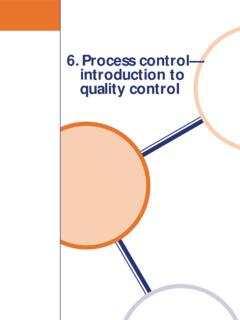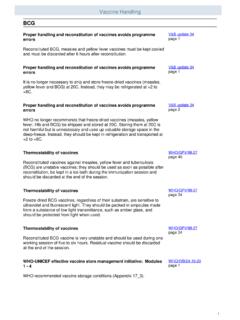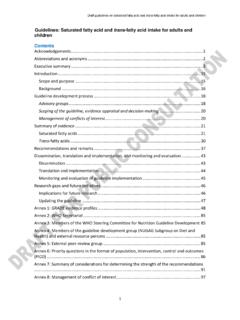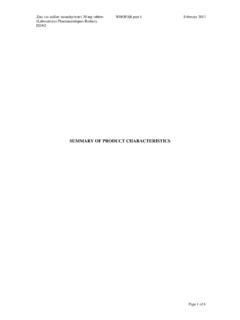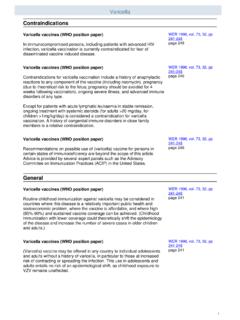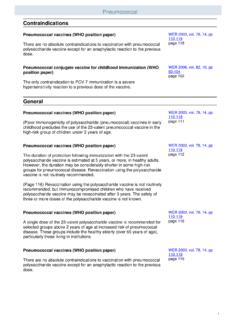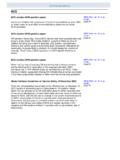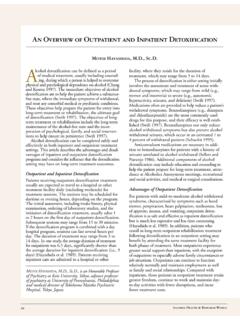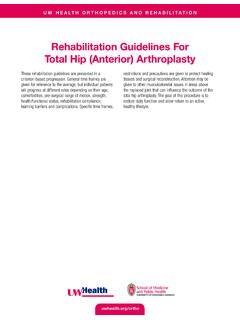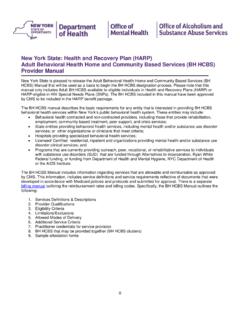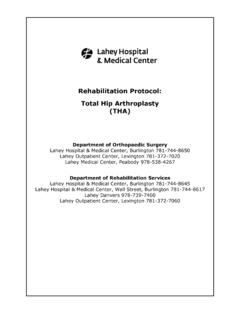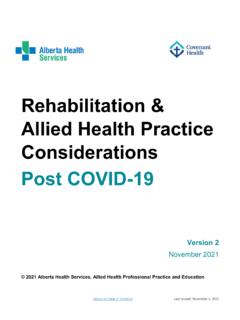Transcription of Management of patients with stroke: Rehabilitation ...
1 Clinical Guideline on Stroke Rehabilitation Management of patients with stroke: Rehabilitation , prevention and Management of complications, and discharge planning Ulaan Baatar 2013. 1. Contents PREFACE ..5. Development of the Clinical KEY RECOMMENDATIONS ..6. A. INTRODUCTION ..9. need for a guideline .. 9. Epidemiology .. 9. Definition of Rehabilitation In relation to 10. The code of disease .. 11. Target user of the guidelines .. 11. The aims of the 12. А.7. Statement of 12. Date of guideline development .. 12. Date of next revision .. 13. List and contact information of authors and persons that participated in the guideline development .. 13. Definitions and terminology used in guideline .. 14. How to use the Guideline and tools .. 14. B. Management ALGORITHM .. 17. C. EVALUATION AND Management .. 18. ORGANISATION OF Rehabilitation 18. Referral to stroke services.
2 19. Organization of hospital Rehabilitation services .. 19. Management AND PREVENTION STRATEGIES .. 20. General Rehabilitation 21. Gait, balance and mobility .. 22. Upper limb function .. 24. Cognition .. 25. Visual problems .. 26. Communication .. 27. Nutrition .. 28. Dysphagia .. 29. Continence .. 30. Urinary incontinence .. 30. Faecal incontinence .. 32. MANAGING COMPLICATIONS .. 32. Poor oral hygiene .. 32. 2. Spasticity .. 33. 33. Prevention and treatment of shoulder subluxation .. 34. Pain .. 35. Prevention of post-stroke shoulder pain .. 35. Treatment of post-stroke shoulder 36. Central post-stroke pain .. 36. Swelling of the extremities .. 37. Loss of Cardiorespiratory Fitness .. 37. Post Stroke Fatigue .. 37. Disturbance of mood and emotional 38. Behavioural change .. 39. Deep vein thrombosis (DVT) or pulmonary embolism (PE) .. 39.
3 Pressure care .. 40. Infection .. 41. 41. Sleep apnoea .. 42. TRANSFER FROM HOSPITAL TO 42. Pre-discharge .. 43. Discharge .. 43. Early supported discharge (ESD) and post-discharge support .. 45. Home based or outpatient Rehabilitation .. 45. Longer term stroke Rehabilitation in the community .. 45. Driving after a Stroke .. 46. Physical Activity after Stroke .. 47. Return to work .. 47. Sexuality .. 48. Support .. 48. Peer support .. 49. Carer support .. 49. General Practitioner Care .. 50. ROLES OF THE MULTIDISCIPLINARY TEAM .. 50. care .. 51. Physiatrist (Physician) Care .. 51. 52. Occupational Therapy .. 53. Speech and Language Therapy .. 55. Social Work .. 56. 3. Clinical Psychology .. 56. Dietetic Care .. 58. Ortoptic Care .. 59. Pharmaceutical Care .. 59. PROVISION OF INFORMATION .. 60. Information needs of patients and carers .. 60. Checklist for Provision of Information.
4 61. IMPLEMENTING THE GUIDELINE .. 63. Resource implications of key recommendations .. 63. Auditing Current Practice .. 66. REFERENCES .. 68. ANNEX .. 69. 4. PREFACE. This guideline was created by MOH and health project of MCC, WHO and professional committee of Rehabilitation of MOH, Mongolian society of physical & Rehabilitation medicine, University of Health Sciences Mongolia (HSUM), the Shastin and State hospital. The guideline has been reviewed by the Ministry of Social Welfare, the National Rehabilitation Centre, AIFO, Aimag- and Soum-level representative hospitals. This guideline includes clinical Rehabilitation , prevention and Management of the complications and community based Rehabilitation services. The overall purpose of this guideline is to provide recommendations and evidence of the current best practise, which can guide the development of local protocols depending on the local situation, in order to ensure a standard service of stroke Rehabilitation Management .
5 Development of the Clinical Guideline This clinical guideline was produced on the basis of the National Clinical Guideline by Scottish Intercollegiate Guidelines Network (2010), the Clinical Guidelines for Stroke Management by the Australian National Stroke Foundation (2010), the Clinical Guidelines on Stroke by the National Institute for Health and Clinical Excellence in the UK (2008) and the American Clinical Practice Guideline, by the American Stroke Association (2005). This guideline states the recommendations for Stroke Management based on the current body of evidence and the recommended best practice based on clinical experience and expert opinion. Following the international evidence, each section within this document has a related paragraph regarding the current situation in Mongolia as per 2012, in order to indicate the possible Management within Mongolia at present.
6 It is recommended that local protocols are developed to standardize the Management possible at the local level (in terms of local human resources, patient Management , referral network, where/how assistive and adaptive devices can be purchased/made). As developments within staff capacity, organization of Rehabilitation and equipment occur, the protocols should be reviewed and updated at regular intervals (ex. annually). The Annex within this guideline includes examples of multidisciplinary assessment forms, discharge form and Rehabilitation terminology. Furthermore the Annex includes a checklist guideline that can support the implementation of the national guideline and local protocols by guiding the healthcare professional through the patient Management from admission to discharge to the community. 5. Finally in annex to this guideline is the National Community-Based Rehabilitation Strategy and information regarding CBR-Coordinators and community services in order to support the communication between tertiary-level, secondary, primary and community services.
7 KEY RECOMMENDATIONS. The following recommendations were highlighted by the guideline development group as the key clinical recommendations that should be prioritized for implementation. Organisation of services Stroke patients requiring admission to hospital should be admitted to a stroke unit staffed by a coordinated multidisciplinary team with a special interest in stroke care. In exceptional circumstances, when admission to a stroke unit is not possible, Rehabilitation should be provided in a generic Rehabilitation ward on an individual basis. The core multidisciplinary team should include appropriate levels of nursing, medical (physiatrist), physiotherapy, occupational therapy, speech and language therapy, and social work staff. patients and carers should have an early active involvement in the Rehabilitation process. The multidisciplinary stroke team should meet regularly (at least weekly) to discuss assessment of new patients , review patient Management and goals and plan for discharge.
8 The stroke team should meet regularly with the stroke patient and their family/ carer to involve them in Management , goal setting and planning for discharge. All patients , including those with severe stroke, who are not receiving palliative care, should be assessed by the specialist Rehabilitation team prior to discharge from hospital regarding their suitability for ongoing Rehabilitation . Telemedicine: Telestroke can be used to improve assessment and Management of Rehabilitation where there is limited access to on-site stroke Rehabilitation expertise. All stroke services should be involved in quality improvement activities that include regular audit and feedback (at least every two years). Management and prevention strategies Stroke patients should be mobilized as early as possible after stroke. Personal ADL training by occupational therapists is recommended as part of an in- patient stroke Rehabilitation program.
9 In the situation of no occupational therapists, Rehabilitation nurses and physiotherapists should be trained to complete personal ADL. training. Rehabilitation doctors should be aware of the necessity for ADL training. Treadmill training may be considered to improve gait speed in people who are independent in walking at the start of treatment. Where the aim of treatment is to have an immediate improvement on walking speed, efficiency or gait pattern or weight bearing during stance, patients should be assessed for suitability for an ankle-foot-orthosis (AFO) by an appropriately qualified health professional. Physiotherapists should not limit their practice to one approach' but should select interventions according to the individual needs of the patient. Gait-oriented physical fitness training should be offered to all patients assessed as medically stable and functionally safe to participate, when the goal of treatment is to improve functional ambulation.
10 Stroke patients should be assessment for their need of assistive devices such as wheelchair, walking aid etc. The clinician should ensure the appropriate prescription of the assistive device (size, explanation of safe usage, where to receive/ purchase assistive device). Rehabilitation should include repetitive task training, where it is assessed to be safe 6. and acceptable to the patient, when the aim of treatment is to improve gait speed, walking distance, functional ambulation or sit-to-stand-to-sit. Where considered safe, every opportunity to increase the intensity of therapy for improving gait should be pursued. Splinting is not recommended for improving upper limb function. Stroke patients should have a full assessment of their cognitive strengths and weaknesses when undergoing Rehabilitation or when returning to cognitively demanding activities such as driving or work.

